In the ongoing fight against far-right extremism, Laut gegen Nazis e.V. (Noise against Nazis), a nonprofit organization, has taken an innovative approach to counter the use of coded symbols and abbreviations by neo-Nazi groups. The campaign, aptly titled “Rights against the Right,” not only raises awareness but actively employs trademark law to curb the spread of extremist propaganda.
In Germany and other European countries, explicit Nazi symbols, signs, and words are strictly prohibited. However, extremist groups have consistently found ways to circumvent these bans by employing coded language, creating a legal loophole. For instance, the banned term “HAKENKREUZ” (Swastika) transforms into “HKNKRZ,” rendering it impervious to bans. These codes are then used on merchandise like t-shirts and sweaters to fund extremist movements.
“Laut gegen Nazis” recognized the need to tackle this issue head-on. The strategy involves outsmarting the far-right by securing trademark rights for the coded symbols and abbreviations commonly used by extremist groups. With ownership of these trademarks, the organization gains the legal authority to challenge and revoke the rights of Nazi online shops to use these codes.
To implement this strategy, Laut gegen Nazis partnered with an ad agency, Jung von Matt, to navigate the complexities of trademark law. The organization secured trademark rights for various Nazi codes at the European trademark office, becoming the rightful owners of these symbols.
As trademark owners, Laut gegen Nazis can now hold Nazi shops accountable for the first time. The legal approach involves compelling these shops to remove and destroy merchandise featuring the trademarked codes, while also seeking compensation for each item sold. This groundbreaking initiative marks a significant step in disrupting the financing mechanisms of extremist movements.
The campaign unfolds through a film and a dedicated website optimized for press and social media. The film serves as an introduction to the innovative strategy, explaining how trademark law is being leveraged to confront and dismantle the far-right’s use of coded symbols. The website, designed to engage the audience, encourages participation through donations to support the ongoing legal efforts.
By publicizing the trademarks and the legal actions taken against far-right merchandise, the campaign aims to create a buzz and generate awareness. This multifaceted approach not only disrupts the financial resources of extremist groups but also educates the public on the existence and implications of Nazi codes.
“Rights against the Right” is a powerful initiative that demonstrates the potential of legal strategies in combating far-right extremism. Laut gegen Nazis, with its innovative use of trademark law, is reshaping the narrative and actively dismantling the tools used by extremist groups to perpetuate hate.

